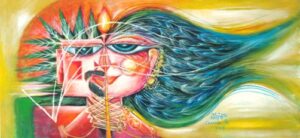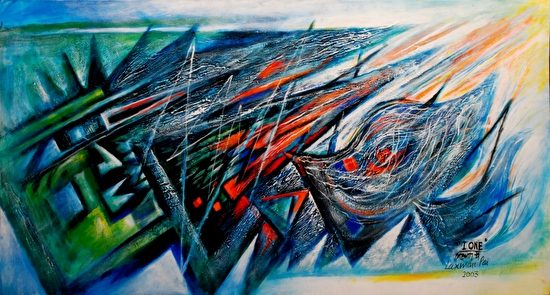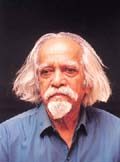Laxman Pai an Indian artist and painter returned to his home state after many years. At the age of 90, he still enjoys painting like there’s no tomorrow. He has taken a conscious decision to stop labelling his paintings to allow people have a direct communication with art.
“I want people to find their own image, not necessarily the image of the artist, and enjoy it,” he says.
Pai served as principal of the Goa College of Art from 1977 to 1987 and was born in Margao. His first experience with paint brushes and colours was at his maternal uncle Mauzo’s photography studio. He also contributed illustrations for hand-written magazines edited by Manohar Sardesai.
At the time, Goan artists Dinanath Dalal and R S Mulgaonkar were earning very well, and Pai’s parents thought it was a flourishing profession to get into. He pursued a diploma in Art at JJ School of Art in Mumbai.
In 1946, he decided to join the Goa Liberation movement, offering Satyagraha outside the Margao police station and getting arrested for it. He was still studying in the final year. He remembers his swollen hands after being beaten up in custody but was soon let out as he was still a minor.
Pai participated in the activities of the legendary Bombay Progressive Artist’s Group, founded by KH Ara, FN Souza, SH Raza, MF Hussain, HA Gade, SK Bakre and others, even though he wasn’t a part of it. “I believed in having strong traditional roots. Once you have these, you can face all the winds around,” Pai says.
One of Laxman Pai’s paintings . . . 
His association with the group didn’t go down well with the JJ School, where he was now appointed as Fellow, teaching diploma students. He was demoted to teach grad class. “It was offensive. I wrote a letter against the dean and I was called to his office and asked to withdraw it, failing which I would be expelled. I decided to pack up and show my strength abroad. I had a revolutionary mind at the time.”
Pai then wrote to the late Said Hyder Raza in Paris and told his parents he was going there for further studies. “Raza made all the arrangements for me, enrolled me in art school and got me a student’s card which I used for ten years.”
Until this day, Pai has held more than 100 solo exhibitions in Paris, London, Munich, Stuttgart, Bremen, New York, San Francisco, Bangkok, Kuala Lumpur, Singapore, New Delhi, Mumbai, Kolkata and Goa. “There has to be an end to some adventure,” he says, when asked why he left Paris for Delhi after ten years.
Pai somehow drew his inspiration by Indian classical ragas for one of his favourite painting series ‘Musical Moods’, in 1965. He would choose one raga from each ‘thata’ and would then play one on the sitar at night and record it. The next day he would start painting with the same raga playing as background music.
Pai received the Padmashri in 1985, and several other awards in the course of his illustrious career.
When he heard that an art gallery was proposed at the Adil Shah palace in Panaji, Pai offered his paintings to the government on the condition that money would be kept aside to preserve them, refusing to give any of his works without anything in black and white.
Until a few years ago, he and his wife Purnima shuttled between Delhi and the US, where their son Akash lives with his wife Nidhi and their children Ria and Krish. Purnima passed away recently, and Pai has decided to stay in Goa after Thapar brought him to his home state.
“I noticed that none of the museums and galleries in the US had his works on display. I brought him back because artists are usually glorified after they have died and gone which is very sad. FN Souza and Gaitonde were paupers when they died, but their paintings are sold for crores today. I just wish every senior artist is glorified while they’re still living,” she says.



